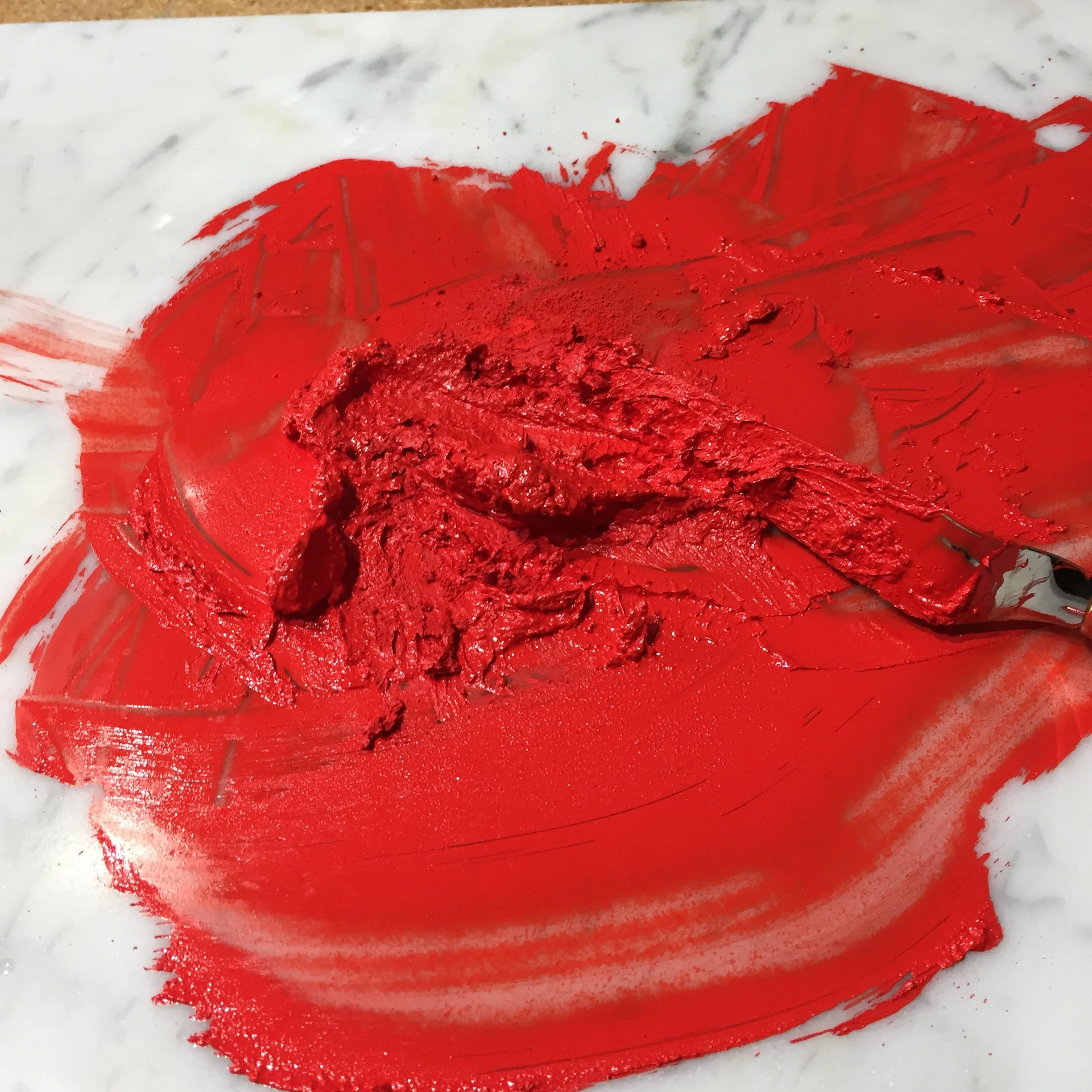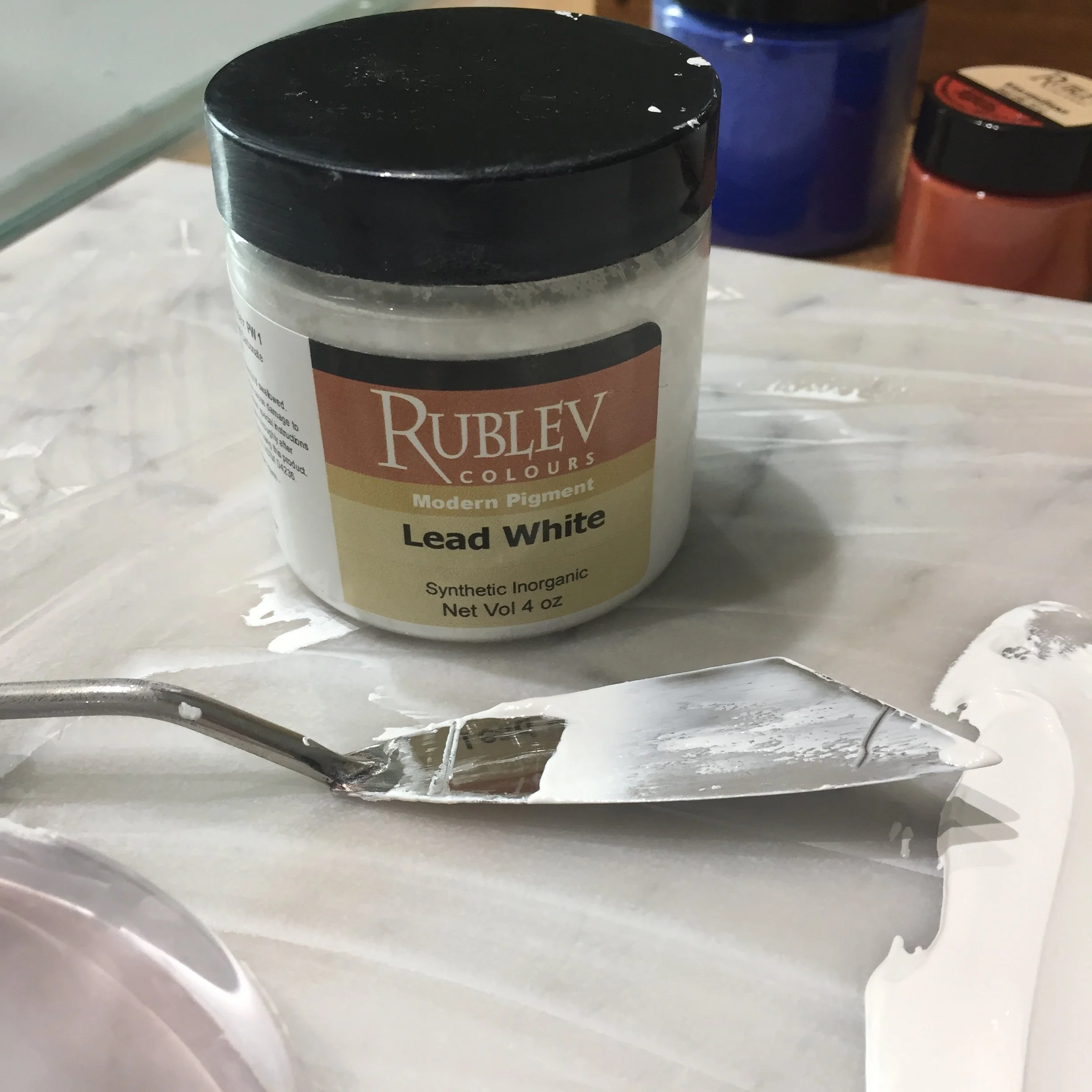Hand Mixing Paint
Mixing Paints from Pigment with Walnut Oil
MIXING
Making paint is simple and the time required, once you find the palette you like to use, is usually less than the time spent shopping for materials. The process is simple, but there is a learning curve to get just the right consistency for painting. The dry pigment is slowly mixed with Walnut Oil and blended thoroughly to wet all of the pigment. I mix on a marble tile, which I purchased and a stone/tile supplier as a remnant. Once the pigment and oil are blending, begin mulling small amount of the mixture to a smooth consistency. This is where you start to see the final viscosity of your paint. Fine tuning to get the desired consistency can be altered by adding more pigment or walnut oil and mulling.
SAFETY
As to safety, ordinary precautions to avoid inhaling dust, such as wearing a paper mask or, if paranoid, a respirator, is sufficient. However, most of the traditional pigments are no more toxic than typical garden soil, since the source of most is clay, or ground minerals.
These include all the oxides of iron, like ochres, siennas, umbers, all the Mars colors, traditional earth reds like Venetian red and terra rosa, in addition to terra verte and for water-bound paints, calcium carbonate (chalk). Titanium white (titanium dioxide) is safe and happens to be the pigment used in make-up. Zinc white (zinc oxide) is not only non-toxic, but is the base for burn ointments. Ultramarine blue and all the phthalo colors are non-toxic. Cadmiums, handled with a little care as regards dust, can be used safely.
A Benefit of Mixing Your Own Paint
Lead white is one of the oldest pigments used in painting. Because of the toxicity of lead, it can be very hard to come by from the large manufacturers. Through Rublev, we are able to acquire the dry pigment. Be sure to wear a high quality mask while the pigment is in dry form.



